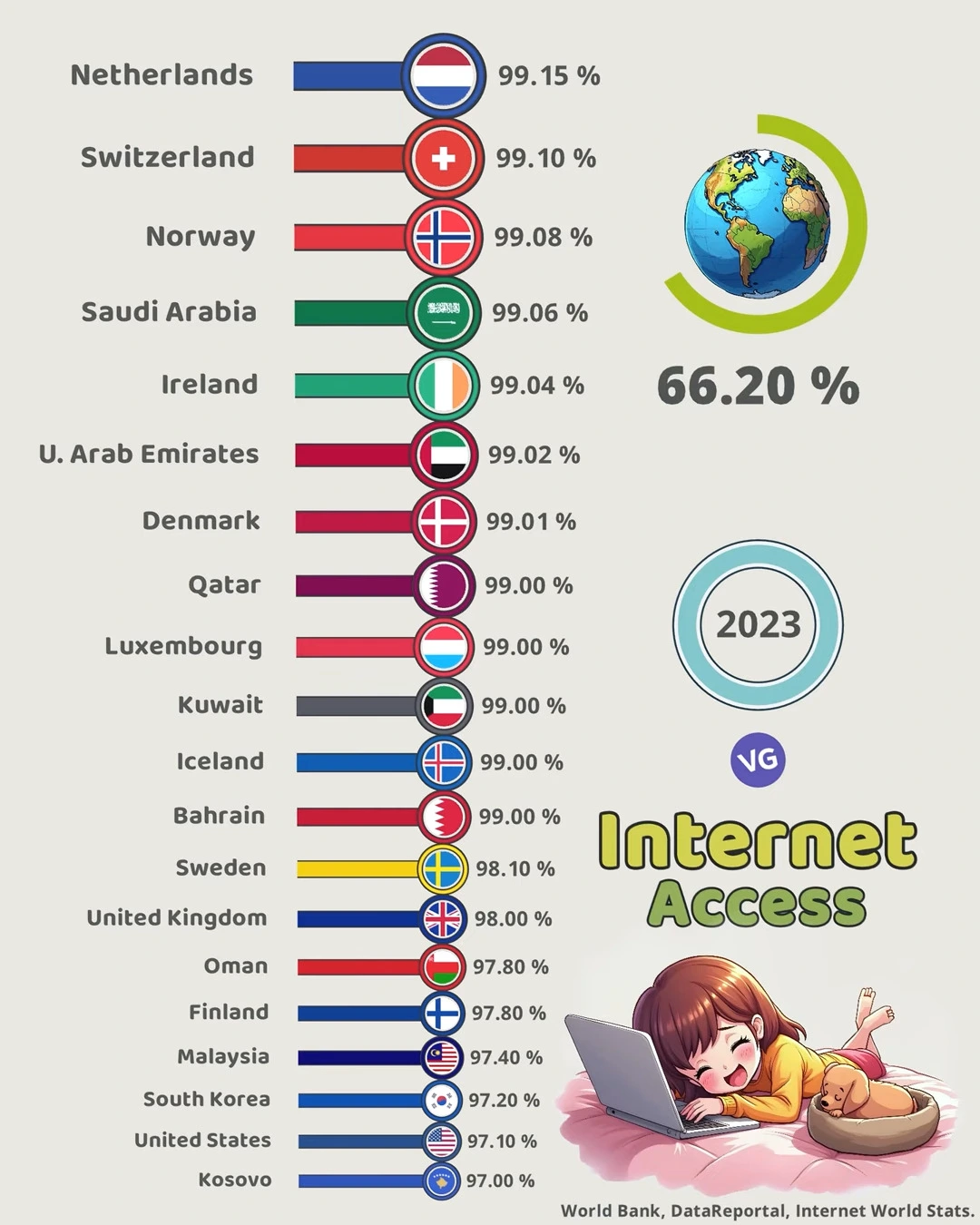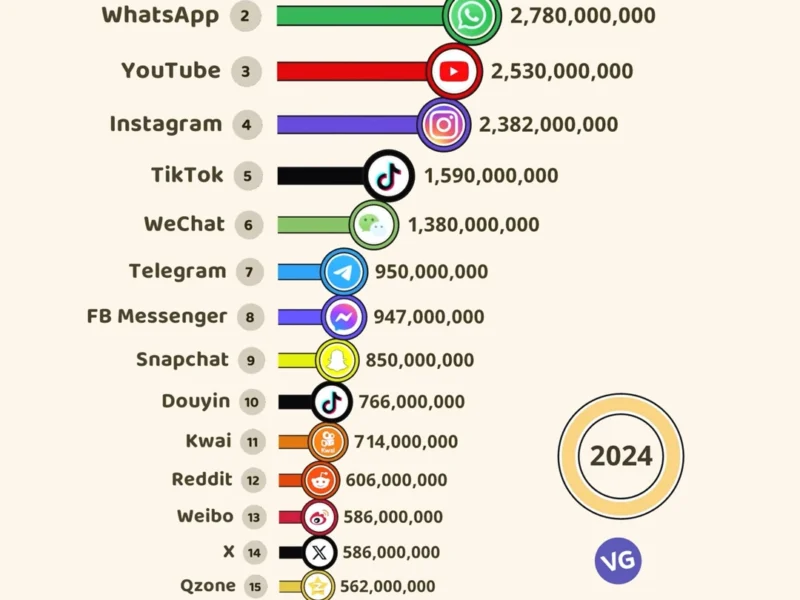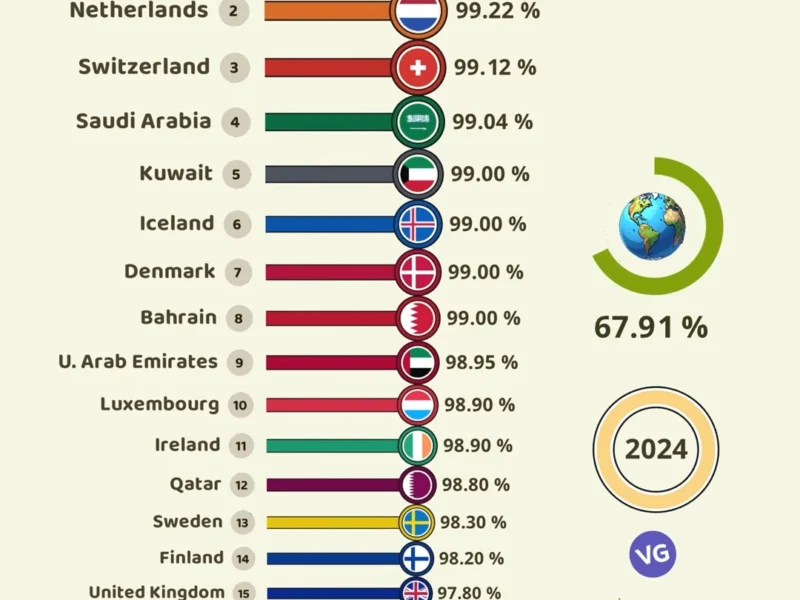According to data from the World Bank, DataReportal, and Internet World Stats, global internet penetration reached 66.20% by 2023, with several nations achieving near-universal access. This comprehensive analysis examines the world’s most digitally connected countries and their implications for the global digital landscape.
Countries with the Highest Internet Access (2023)
| Rank | Country & Flag | Internet Access (%) |
|---|---|---|
| 1 | 🇳🇱 Netherlands | 99.15% |
| 2 | 🇨🇭 Switzerland | 99.10% |
| 3 | 🇳🇴 Norway | 99.08% |
| 4 | 🇸🇦 Saudi Arabia | 99.06% |
| 5 | 🇮🇪 Ireland | 99.04% |
| 6 | 🇦🇪 U.A.E. | 99.02% |
| 7 | 🇩🇰 Denmark | 99.01% |
| 8 | 🇶🇦 Qatar | 99.00% |
| 9 | 🇱🇺 Luxembourg | 99.00% |
| 10 | 🇰🇼 Kuwait | 99.00% |
| 11 | 🇮🇸 Iceland | 99.00% |
| 12 | 🇧🇭 Bahrain | 99.00% |
| 13 | 🇸🇪 Sweden | 98.10% |
| 14 | 🇬🇧 United Kingdom | 98.00% |
| 15 | 🇴🇲 Oman | 97.80% |
| 16 | 🇫🇮 Finland | 97.80% |
| 17 | 🇲🇾 Malaysia | 97.40% |
| 18 | 🇰🇷 South Korea | 97.20% |
| 19 | 🇺🇸 United States | 97.10% |
| 20 | 🇽🇰 Kosovo | 97.00% |
Leading Nations in Digital Connectivity
European Dominance
European nations show exceptional connectivity rates:
- Netherlands leads globally at 99.15%
- Switzerland follows closely at 99.10%
- Nordic countries demonstrate strong performance:
- Norway: 99.08%
- Denmark: 99.01%
- Iceland: 99.00%
- Sweden: 98.10%
- Finland: 97.80%
Middle Eastern Digital Revolution
Middle Eastern nations show remarkable digital adoption:
- Saudi Arabia: 99.06%
- UAE: 99.02%
- Qatar: 99.00%
- Kuwait: 99.00%
- Bahrain: 99.00%
- Oman: 97.80%
Regional Analysis
Developed Economies
Advanced economies consistently show high connectivity:
- United Kingdom: 98.00%
- United States: 97.10%
- Luxembourg: 99.00%
Asian Tigers
Developed Asian nations demonstrate strong digital infrastructure:
- South Korea: 97.20%
- Malaysia: 97.40%
Global Digital Divide
The global average of 66.20% highlights several key points:
- Significant digital divide between developed and developing nations
- Room for growth in global connectivity
- Need for continued infrastructure investment
- Importance of digital inclusion initiatives
Implications
This data reveals several important trends:
- Near-universal access in developed nations
- Strong performance of small, wealthy nations
- Success of targeted digital infrastructure investments
- Correlation between economic development and internet access
For policymakers and technology leaders, this data suggests:
- Importance of maintaining digital infrastructure
- Need for continued investment in connectivity
- Opportunity for digital service development
- Necessity of addressing remaining access gaps
- Critical role of internet access in modern economy
The high rates of connectivity in leading nations set benchmarks for global digital inclusion efforts, while the global average indicates significant work remains in bridging the digital divide.



